#food and organization organization
Explore tagged Tumblr posts
Text
Principle 1 - Ecosystem restoration contributes to the SDGs and the goals of the Rio Conventions.

Restoration projects, programmes and initiatives at all spatial scales, from individual sites to large landscapes and seascapes, play an essential role in achieving ambitious global targets for sustaining life on Earth. Successful ecosystem restoration aims to contribute to the achievement of the 2030 Agenda for Sustainable Development and its 17 Sustainable Development Goals (SDGs), which seek to end poverty, conserve biodiversity, combat climate change and improve livelihoods for everyone, everywhere. The SDGs are unlikely to be met unless ecosystem degradation is stopped and ecosystem restoration is undertaken at cumulative scales of hundreds of millions of hectares globally. Effective restoration simultaneously supports achievement of the biodiversity, climate and land-degradation neutrality goals of the Rio Conventions – CBD, United Nations Convention to Combat Desertification (UNCCD) and United Nations Framework Convention on Climate Change (UNFCCC) – and allied global initiatives. Preventing, halting and reversing ecosystem degradation, as a contribution to global targets, is a shared responsibility among all public and private sectors and stakeholders at local, national and international levels.

#convention on biological diversity#United Nations Convention to Combat Desertification#United Nations Framework Convention on Climate Change#sdg13#sdg12#sdg15#effective practices#sustainable practices#degraded marine ecosystem#degraded terrestrial ecosystem#iucn#food and organization organization#united nations environment programme#ecology#ecological and hydrological connectivity#ecological restoration#right holders#stakeholder groups#effective restoration#global contribution#ecosystem restoration#decade on ecosystem restoratio#sustainability#public and private sectors#local and traditional knowledge
0 notes
Text

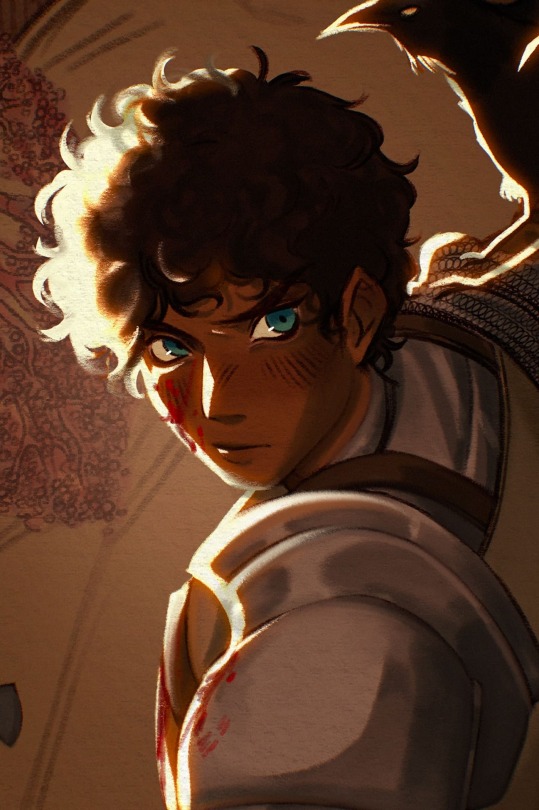
Kabru 🗡️
#my art#fanart#digital illustration#dungeon meshi#dungeon food#delicious in dungeon#kabru#falin (kinda)#tw blood#tw organs#slight gore#painting#illustration#manga#art
11K notes
·
View notes
Text
Always Favors You
Another Sibling Danny and Jason idea!!
"Are you Jason Peter Todd?!" demanded a deep and commanding tone from the strange glowing being in front of them.
All the Bats stiffened and tensed, no doubt gearing up for a fight against the being that somehow knew Red Hood's full name.
Jason, Red Hood, decided to put on a brave front despite no doubt cursing in his head and wondering how the heck did this thing know his full freaking name.
"Whose asking." he snarled out, his hands twitching for his gun when the huge glowing knight with purple flames coming out of his helmet and cape, who was riding on a nightmare looking horse while they all had been in the cave going over tonight's patrol.
The Knight didn't seemed bothered by his response nor did he even seem to care or flinch when Batman made his own demand on 'Why was he there and who was he' or when Damian unsheathed his sword and pointed it towards him. Instead the strange glowing Knight reached to it side and pulled out... A glowing scroll? Huh. (Also he completely unnerved everyone in the room when the Knight didn't even react when Batman had tossed a Baterang when he reached for his side)
The Knight opened the scroll and spoke clearly with purpose.
"Jason Peter Todd,
You are hereby invited as a special guest of honor to the crowning of our future King of the Infinite Realms.
Daniel Phantom, once Daniel Jackson Fenton, and once Daniel Austen Todd.
Prince of the Infinite Realms, the Keeper of Balance, The Peacekeeping Halfa, the Defeater of the Tyrant King Pariah Dark, The Great One, Youngest of the Ancients, Ancient of Space, The Bridge between Life and Death.
You, the half-brother of our King, have been given the highest of honors for your past actions and will be given housing and food in the Realms and Phantom's Keep, for the week long event. Personal servants and attendants will be at your disposal and a seamstress will be on hand to tailor make your attire for the Coronation.
Signed: Clockwork. Ancient of Time. Watcher of the Infinite Timeline. Kronos. Mentor and Adviser.
PS: I shall have Fright Knight ("Me" the Knight bluntly said for a second) leave this scroll along with a personal one for you from Daniel to read over and once you make up your mind sign the bottom of the scroll.
I do hope in time you will pick the right choice Jason Todd, we of the Infinite Realms would like to reward you for your actions. After all, if you hadn't gotten young Daniel away from your father that night all those years ago, we would never had gained our Prince nor be free from our once Tyrant King.
Ah, one more thing.
The Infinite Realms will always favor you Jason."
Jason felt like he couldn't breath as Fright Knight? Rolled up the scroll, pulled a letter from his side, and held out the two items for him to take.
#danny phantom#danny fenton#crossover#dp x dc#blue rambles#danny phantom dc#writing ideas#random idea#dpxdc#Danny and Jason are half brothers#Fright Knight#Clockwork mention#Jason saved baby Danny when Willis came home drunk one night and their mom was out of her mind at the moment#Danny had been crying for food and Willis was getting annoyed#Jason managed to run off with baby Danny to a few towns over and put him in a baby box before getting caught a few other towns over by cops#and was shipped back to Gotham#kept his mouth shut about where he put his brother and took any punishment that came afterwords#It set up the timeline where Danny is going to become the Infinite Realms new King#Hence why the kinda sentient Realms 'rewarded' Jason later on when he died aka bringing him back to life#I love the idea of a kinda sentient Realms tbh#it loves Danny because he's been helping rebuild and mend the Realms#Danny is its fav King thus favors those related to him#well everyone but Willis#he's in Walkers prison btw#I want Jason to go tbh and see how every ghost is getting everything ready for the coronation#its chaotic yet organized somehow#I want more Danny's coronation stories#Like I love already King or just finding out Prince Danny but we need more coronation ones tbh
5K notes
·
View notes
Text
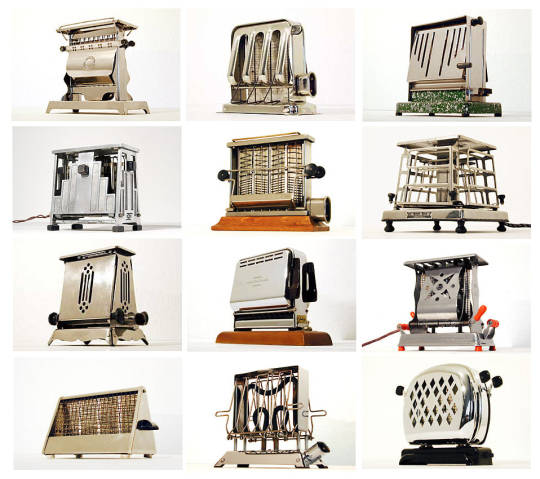

Did you know that there is a Toaster Museum????
#things organized neatly#present and correct#design#museum#toast#toaster#industrial design#chrome#wow#neat#love#food#Germany#archives#bread#history
7K notes
·
View notes
Text

kids i am obsessed with these peppers
meet the Habanada, an open-pollinated pepper that has that has all the fruitiness and intense aroma of a standard habanero but NADA of the heat (yessss puns)
i love watching people eat them for the first time because they always pause for a solid 5 seconds because they expect the heat to come and lord they are bracing for it but it never does 😂
@botaniqueer this seems like something up your alley!
2K notes
·
View notes
Text
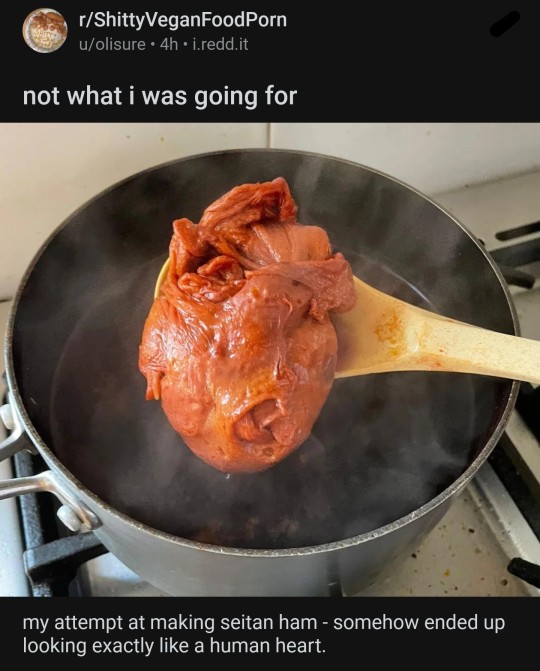
Finally, a vegan alternative to human heart! Douse in ketchup and eat with your hands.
14K notes
·
View notes
Text
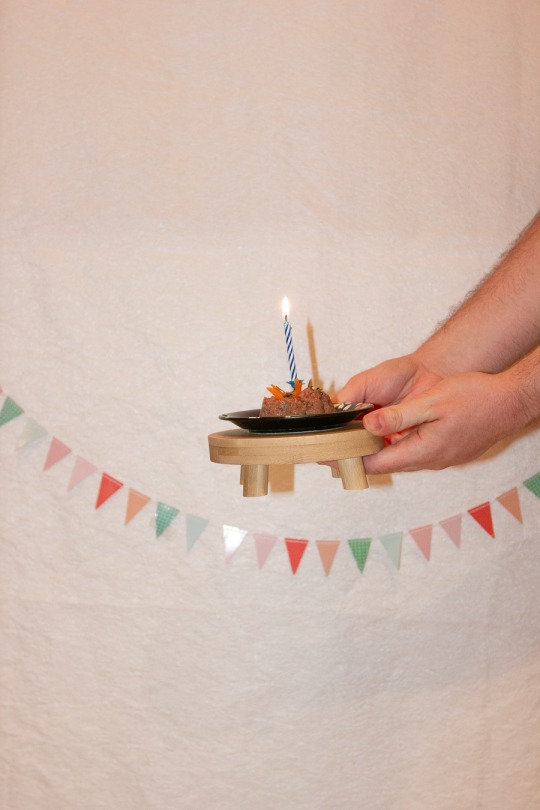

Had a photoshooting for our cats 9th birthday! Everyone say happy birthday teddy
#Teddy#personal#Don't worry we only lit the candle for the first picture#Not around him#We got him the fancy cat food that comes in a jar from the organic store#And put that in a muffin mold for the shape#And then added fresh catnip and steamed carrots that I cut into flower shapes#BTW yes he has a little wooden table
5K notes
·
View notes
Text

curlz
#ik its liek 4 am my time but whatevs#hey mouthwashing fandom....hope u enjoy the food#artists on tumblr#art#selfryed art<3#artwork#doodles#drawing#digital art#mouthwashing#mouthwashing game#wrong organ#captain curly#curly mouthwashing#mw art#fanart#mouthwashing fanart#mouthwashing fandom#digital fanart#digital artwork
235 notes
·
View notes
Text
Principle 2 - Ecosystem restoration promotes inclusive and participatory governance, social fairness and equity from the start and throughout the process and outcomes.

All stakeholders, right-holders, and especially under-represented groups (e.g. local communities, Indigenous peoples, ethnic minorities, women, young people), should be equitably and inclusively provided with opportunities to be engaged and integrated in meaningful, free and active ways. Such inclusive participation is necessary for achieving the desired outcomes of restoration over the long term, and should be promoted as much as possible throughout the process, from planning to monitoring. This participation can be achieved by securing equal and regular access to information and knowledge; recognizing and addressing social asymmetries through empowerment and capacity development of underrepresented groups; seeking free, prior and informed consent; providing effective incentives and improving livelihoods, food security and opportunities for local communities; promoting co-management and ensuring a key role for local communities in decision-making; recognizing rights, needs and concerns; fostering tenure security; pursuing fair and equitable distribution of benefits and responsibilities; and building dialogue, trust and mutual respect through inclusive and transparent governance with mechanisms for impartial conflict resolution.

#right holders#stakeholder groups#ecological and hydrological connectivity#ecology#degraded terrestrial ecosystem#ecological restoration#restorative activities#adaptative management#ecosystem health and integrity#participation#inclusive and transparent governance#local and traditional knowledge#exchange of knowledge#knowledge integration#iucn#united nations environment programme#food and organization organization
0 notes
Note
i’m curious- can you explain, from prepping to actual processing and cooking and such, how the clans make sausage? is it really that easy?
SAUSAGES!!!
It's SO easy. The WHOLE process from prep to cooking is essentially 5 steps. Sausage is so old that it predates the historic record. The earliest record of it is from 4,000 BC-- but it's SO simple to make that it's almost a guarantee that any carnivorous society would learn how to make their own.
You don't even need fire. Most types of sausage are made by cooking the meat with heat or smoke, but you can get SALAMI through passive fermentation and air drying. Pepperoni is also in that same category of "dry sausage"! It was an invention of Italian American immigrants modifying sopressatta back in the 1920s.
Sausage is how you can use every last little scrap of meat on an animal, AND preserve it while you're at it. There's a ton of different types of sausages, but what binds them, literally, is that they're meat stuffed in digestive tract. ALL types of meat. The filling can be offal, muscle, or even blood, packed in with varying types of preservatives and spices.
(though in modern sausage production they use don't use natural cases as often, because it's more expensive than artificial collagen casing. that's actually how you can tell right away if you're at a quality pizza place or not-- if your pepperoni "cups" up after it's cooked, it's made with the real stuff. That's caused by the natural casing shrinking because of the heat.)
the TL;DR of making sausage is collect, scrape, soak, stuff, dry. Five simple steps. I am going to create an incredibly detailed walkthrough of it, every little tiny thing, from harvest to mealtime.
Minimum tools needed: a flat rock and a dark place, such as a cave.
Recommended tools: A flat rock, a bird bone with a stick, a cold underground den, fire.
It usually begins when an animal is brought back to camp, though it could even be started right in the field where prey is caught.;
CONTENT WARNING
This post contains discussions of evisceration and unsanitary topics in the context of natural butchery.
We're going to talk about disembowelment and processing animal organs into food. This includes how to open a carcass, and washing out the things that intestines usually contain. There is also an image of sausage casings at various stages of processing, including when it's still raw (but clean) intestine.
I was taught how to clean a deer carcass when I was only a teenager and I've never been squeamish, but everyone's tolerance for this sort of thing is different. It's okay if this isn't something you can handle; just know that the process of sausage making is easy, yet still a work of skill.
Appreciate the effort that goes into making your food! Just remember; there's a reason why they warn you about "finding out how the sausage is made!"
Step 1: Collecting the offal
You might think that because the prey that Clan cats hunt are so small, there would be some animals they can't make sausage from because of it. That's not the case! Bowels are naturally stretchy and will expand when stuffed; even a mouse can make for snack-sized sausages that a cat would enjoy.
(Remember; an entire mouse is approximately 1 meal for a single warrior.)
Removing the intestines is easy to do, requires no fire, and is necessary for avoiding parasites. Even a canon-compliant Clan can, and should, do this as part of their food processing. Canon treats claws like they're small knives and I do too because it's cool as hell, but if your Clan is more tool advanced, you could even allow them to use knives.
That gruesome phrase, "there's more than one way to skin a cat" is EXTREMELY accurate for ALL types of skinning. EVERY hunter and butcher you will meet will have their own method. Here's ONE way to do it, for right after the carcass has been bled dry and skinned;
It is helpful to hang the carcass by the legs, but not required. Especially for a large animal like a hare, this will make gravity your friend in getting the organs out. Clan cats have access to plenty of twine for this; brambles, willowbark, flax, etc.
Cut a "circle" around the anus first, under the tail. You want to keep the whole tract in one piece. If the intestines rupture, it might contaminate the rest of the ENTIRE carcass. This part you cut now will be the back end of the "tube" you're going to pull out.
From the bottom of the "circle," slit carefully down the belly until you hit the bone in the middle of the ribcage. This is tricky. If you go too deep, you'll cut the guts and spill waste everywhere. Don't go deep enough and you won't even get through the membrane. A good mentor would guide their apprentice's paw at this point, showing them how to carefully hook one layer deeper each time and how to angle the claw so they don't cut deeper than they mean to. (NOTE: the sternum is a lot shorter in most four-legged animals than it is in a human. The warrior's cut will be much further down the "chest" of the prey than you think.)
Now, the guts need to be cut from the back of the cavity. This is MESSY, but not tricky. This is the part where an impatient warrior would mess up, start yanking, and puncture the gut. If the animal is hanging, this is MUCH easier as the anus is still "anchored" to the pelvis like a big noodle.
Lastly, reach down and pull the throat up, then and take the whole tract out in one piece! In a very "large" animal like a muntjac or a hare, a more advanced Clan might tie off the colon with string before pulling it out, to avoid making a mess.
That's it! You now have the entire GI tract of an animal, including esophagus, stomach, large intestine, small intestine, and all the extra species-specific organs (like tripe or gizzards) they contain. An experienced butcher can do this whole process in less than a minute on a smaller animal-- and the small intestine of a mouse alone is over a foot long for making into sausages!
(In Clanmew, this "tract" is called a gwussip. It basically means "pile of slightly processed food." It's also used to refer to the dough used to make tunnelbuns in WindClan, and the minced meat that will be used to stuff the sausages later.)
Various types of sausage are made from the stomach down. Haggis is one type of sausage, for example, traditionally made of a sheep's stomach. The esophagus doesn't have the same "stretchiness" that the intestines are known for, and is more often made into a mince and sauteed if it isn't just wasted by being tossed.
BB!ThunderClan in particular likes to let it slow cook in fat and fruit sauce until it's more tender, but still delightfully chewy. It's not enough to fill a warrior up, but it makes a good snack for in between mealtimes. If you're familiar with Mexican cuisine, pig esophagus is prepared as "buche."

mmmmmmmmmmmmmmm
But, digressing,
Now that you have your intestines, it needs to be turned into casing.
Step 2: Scrape the inner membrane
Intestines are full of fecal matter. We all know this. Especially if you collected it correctly, it's going to be full of unwanted liquid when you first pull it out. Thankfully, it's just a tube and it can be washed.
These organs are made to contain everything icky inside of the gut, protecting the rest of body with its specialized buffer layers; the meat itself is perfectly fine.
The first thing a warrior needs to do is run it through a clean stream of running water, just like rinsing out a reusable straw. They'd be taking care to rub every fold clean, like a raccoon washing stockings in a river. Depending on the species the organ comes from, the culture of the Clan, and the condition of the animal before it was killed, some intestines might smell worse and need to be washed for longer than others.
BB!ShadowClan is different from other Clans in that they will flush it with a mix of vinegar and water to clean intestines. Especially since so much of their territory is stillwater, they're extra concerned with making sure their offal is cleaned. Other Clans find vinegar repulsive. ShadowClan finds other Clans dirty. Other Clans point out that they're the ones that eat literally anything. ShadowClan says they'd be able to stop wasting food if they spent less time whining and more time food processing. Cultural friction ensues.
After it's flushed, the cleaned intestine is turned inside-out. Just like a sock. From there, the inner layer of membrane is scraped off.
A long, flat rock is the best tool for this, or a good bone scraper. I've also heard of people doing this with a knife, so the rock is actually still technically optional for even the most thumbless Clans... but the cats can weave ropes out of grass canonically. They can use a rock.
(meanwhile in the background the bb!cats are playing instruments around a fire, absolutely ignoring canon's inconsistent tech level)
This is what it looks line at each stage of this process. Totally raw intestine looks like the image on the left. When turned inside-out, it resembles the middle. After scraping, it looks like the right.

Now there's just one more step before you officially have casing.
Step 3: Soaking in salt solution.
This is actually the hardest part for a Clan trying to be ecologically accurate. Salt is very rare in most forest environments. If your Clans are set up in a place with a natural salt source (near a beach, or near a geological deposit), you'll have no problems!
But... most Clans would, logically, not be so lucky and need to get creative.
The first option is stealing salt from farmers and hunters. Salt licks are usually left out in large, white blocks for sheep in fields, and deer in the woods. However, BB!Clan cats, except SkyClan, strongly avoid interacting with humans. That includes not approaching the salt licks left out for deer and livestock.
So, traditionally in the Forest Territory, they used the second option: Slowly burning the roots of coltsfoot. Dandelion also works, but will give you much less salt. In the Lake Territory, cats are sent on regular "Salt Patrols" to the ocean, bringing back bags of ocean salt from evaporated water for medicinal and culinary use.
Once that's done, simply toss the intestines in salt water for a few hours. That's it. You now have casing.
Step 4: Stuff the casing with mince.
Mince is just finely shredded meat, mixed with any spices your little kitty heart desires. Humans use a lot of herbal spices such as fennel, but as obligate carnivores, warriors prefer mushrooms which have compounds resembling the taste of meat.
The real secret to stuffing, though, is to make sure EVERYTHING is chilly before you do it. Cold mince is less sticky, keeps its shape better when being handled, and the fat is distributed more evenly in the mix. Sausages made during winter come out better than ones made during summer, for that reason.
Don't overstuff and try to keep it even. You can do it by paw, but it would be MUCH easier with a simple gadget. The earliest sausage stuffing tools we know of were as simple as a funnel and a plunger like this antique;

But since Clan cats are stuffing little animals, they can work with much smaller natural materials. The bones of birds are naturally hollow-- just clean one out, get a stick to push the meat through, and you're making tiny sausages.
And the last, but most important part,
Step 5: Dry it by way of heat and smoke (sausage) or fermentation and air drying (salami).
What you have in your paws before you start this process is, essentially, a little bag of raw meat. Most food preservation can be understood as the simple act of drying. Salt, fire, smoking, wind exposure-- those are all just fancy ways of removing moisture from food.
So generally, the more moisture the technique removes, the longer it will last.
"Fresh" sausages, your bratwurst, cheap hot dogs, bangers, the ones that are JUST made of mince and casing and you're not planning on doing anything else, those get cooked and eaten immediately. These types are actually pretty "recent" historically speaking, because it was a luxury to not be making sausages to store and transport meat.
So to make it last, they will usually be "cured." That means that the mince was mixed with salt before stuffing. Simple as that. Smoked cured sausage is self explanatory once you know what the terms mean-- it's been cured with salt, and then put in a smokehouse to dry.
(side note: curing is also required for smoking, else the conditions inside the sausage become the perfect breeding ground for botulism)
But the thing you're really waiting to hear about is "dry sausage." NO refrigeration required, NO fire needed at any point in the process. Salami specifically is cured, fermented in a dark and humid place, and then air-dried. This process takes only a few days if it's hot, and up to a week if it's cold. There are often starter cultures and sugars (fruits) added to the mince which reduces the "failure" rate, but this can work completely on its own.
Its taste will also vary depending on the cultures of bacteria doing the fermenting-- but that's unironically the kind of thing beyond the scope of this. That's culinary science.
This is where a dedicated "den" for hanging fermenting sausage would be handy. You can make do with a cave, but being able to completely control the environment can be the difference between having food in two days, versus having food in a week. You can even store it while it's fermenting for months if you can control the environment perfectly.
The last step is simply to take it out when it's at the absolutely perfect conditions and stop fermentation. If it ferments ALL the way, it will taste so sour it's inedible.
And that's it.
It's that simple. You hung it up in a cave for a while, and now you have shelf-stable meat that doesn't need to be refrigerated.
The catch; this works best in hotter, sunnier, southern environments, where the post-fermentation process is finished off with air drying. Drying is VERY GOOD because it totally removes the moisture. BB!Clans, in Northwestern England, prefer to finish this off with smoking unless they're doing it in summer and the weather cooperates.
Air drying is better because it typically removes more moisture and makes the sausage hard. Finishing fermentation with smoking causes it to be "semi-dry."
This far north, the days are cloudier, darker, and colder than it is further south, where the most famous dry sausages are made. It's not impossible to make fully dried sausage here, but it's a LOT more precise of an art.
If your Clans are based in the USA, don't worry about that. Dry fermentation is possible everywhere there except Alaska. Even if they're at the very tippy-top north of the continguous 48 states, they are barely higher in latitude than Paris, France. To put what BB's environment is in context, remember that you could walk a straight line across the globe from Liverpool, UK and be somewhere near Edmonton, Canada.
(in fact, dry fermentation can be done easily anywhere it isn't too dry or too cold. RIP Southern Chilean fanclans you will simply have to smoke it just like the Brits.)
And that's sausage. That is an in-depth guide to how salami can be made by Clan cats.
#warrior bites#sausage#salami#clan culture#better bones au#intestine#intestines#food processing#meat#cw animal death#carcass#butchery#cw butchery#tw butchery#cw meat#tw meat#organs#cw organs#tw organs#cw intestine#cw intestines
301 notes
·
View notes
Text


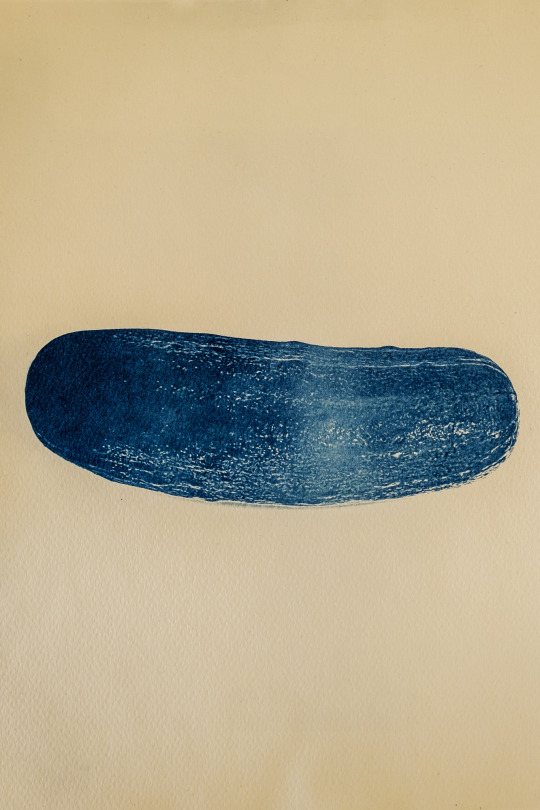

I wanted to celebrate with these two prints that I made, a long history that jewish people, garlic and pickles have. You can purchase these print via my Etsy shop.
And here's the history:
Already in ancient times, garlic was a central part of celebrating Shabbat. The Talmud devotes several passages to talking about garlic, explaining that it is a key part of Shabbat meals. “With what does one delight in the day of Shabbat?” the Talmud asks, recording an answer provided by Rav Yehuda, son of Rav Shmuel bar Sheilat, who recalled the words of his teacher Rav: “With a dish of beetroot, and a large fish, and heads of garlic” (TalmudShabbat 11b). Elsewhere, the Talmud refers to Jews who celebrate Shabbat as “garlic eaters,” so closely identified was Shabbat dinner and lunch with this fragrant vegetable. (Talmud Nedarim 31a)
Even later on, in the medieval times, the conncetion between jews and garlic was quite close. In fact, it helped the community to survive! In Istanbul, when Jews avoided the plague during a terrible epidemic, it was said that the virus did not penetrate the Jewish area because of the smell of garlic. Jews hung bulbs of garlic outside their doors to ward off the plague as a talisman and sign of good luck. The food historian Gil Marks adds: “Historically, the addition of garlic was among the typical Jewish touches that enhanced local dishes. In many cultures, the presence of garlic marked a dish as Jewish.”
In Germany, in the towns of Speyer, Worms and Mainz were home to large, vibrant Jewish communities. A popular acronym for these areas took the first letter from each town – S, W (which is written with a double “U” sound in Hebrew) and M – echoed the Hebrew word for garlic, shoom. The area was known as Kehillas Shoom (or SchUM) – the community of “Shum”, or garlic in Hebrew.
So identified were German Jews with garlic that some anti-Semitic images persist from the Middle Ages and Renaissance, depicting Jews holding or posing with bulbs of garlic.

But jews and pickles go back for a long time too. Eastern European Jews brought their pickle-making traditions to America in the late 19th and early 20th centuries and made it famous there. Pickled cucumbers were an important part of their diet due to the need for preserving food in harsh climates in Eastern Europe, where was a common practice to collect and preserve pickles in order to survive winter. Everything could be pickled, from lemons to carrots, with varying degrees of culinary success.
Some took the cucumber, a cheap, accessible vegetable, preserved it in the spring to make them last through the winter and feasted on it throughout the year. Some of those people were Jews and thus the Jewish love affair with pickling began, as a way of keeping vegetables hygienic and healthy.
Fermantation itself as has a biblical orgin in various places. Perhaps the best-known early reference to fermented food is the Passover story in Exodus (12:39): When the Jews were "thrust out of Egypt, and could not tarry," their dough could not rise (through fermentation). We know this unleavened bread as matzo. But when they left Egypt, after some time, their longing for these goods came up: "We remember the fish which we were wont to eat in Egypt for nought; the cucumbers, and the melons, and the leeks, and the onions, and the garlic” It’s likely that the cucumbers mentioned by our Jewish forebears were pickled in some way. Ancient cucumbers tasted extremely bitter and the ancient Egyptians “cooked” their cucumbers by lightly fermenting them. The resulting pickled vegetables were slightly alcoholic, and were seemingly eaten for their mind-altering properties.
#jewish#jumblr#print#pickle#garlic#organic#food#fermentation#pickling#tradition#eastern europe#delicacy#deli#garlics#onions#cucumber#pickles#cyanotype#judaism#jewish history#food history#etsy#sale#art#cyanotype print#sunprint#original#decoration
178 notes
·
View notes
Text
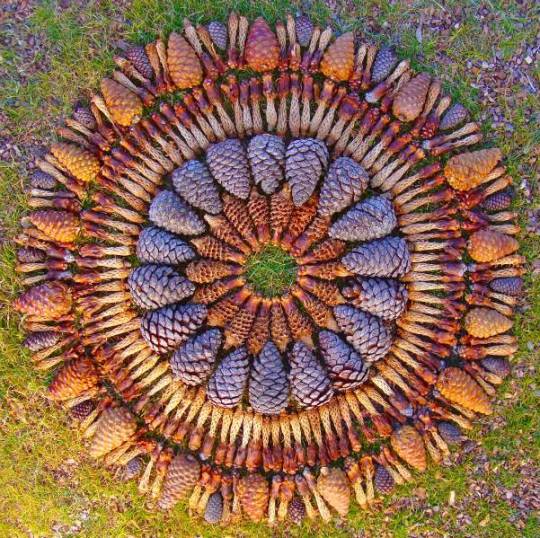


Flower Mandalas by Kathy Klein
via Colossal
#things organized neatly#color#art#mandala#fall#orange#brown#flowers#food#pepper#red#pinecone#biology#science#earth#life#danmalas#arizona#usa#contemporary art#womens art#female artists#sculpture#perfection#pattern
1K notes
·
View notes
Text

I know this is about speeding around farm machinery.
However, the top sentence really resonates with me for other reasons. Primary producers really are the, often undervalued, backbone of our society.
If you ate today, thank a farmer.
#farm#farming#primary producers#garden#gardeners on tumblr#vegetables#gardening#self sufficiency#home grown#organic food#food production#food#eating
132 notes
·
View notes
Text

"100-200 years ago, people ate organic unprocessed food and didn't have vaccines... ... and lived to the ripe old age of 'died in childbirth.'"
-
"Nature wants 5 of your 7 children dead. It wants you dead by 50. Everything better than that is brought to you by science & technology." -- David Frum
#science#human progress#wellbeing#life expectancy#organic food#unprocessed#processed foods#vaccines#vaccine#religion is a mental illness
638 notes
·
View notes
Text
PIDW time travel fic where after dying Shen Jiu wakes up in the past, after the ling xi caves and his subsequent qi deviation, with a chance to change his fate. Bingge also wakes up in his fourteen year old body, memories fully intact. Now, instead of actually changing their ways Bingjiu just try to kill each other in increasingly violent, hilarious ways
#Imagine them setting booby traps all along Qing Jing peak#Shen Jiu just keeps getting increasingly more mad that no matter what he does Luo Binghe just will not die!!#He shoots Luo Binghe point blank with an arrow at one point#somehow it miraculously misses any vital organs so Luo Binghe just walks it off#It becomes routine that once a day Shen Jiu stabs Luo Binghe#And Luo Binghe’s constantly trying to poison Shen Jiu’s food#only for Shen Jiu to throw it away#Luo Binghe’s finding all kinds of rare demonic plants to put in Shen Jiu’s garden#and rare#dangerous animals to launch into his living room.#Shen Jiu makes Ming Fan deal with them.#Ming Fan slowly decides he hates both his shidi and his shizun#It gets so obvious that all the Peak Lords are confused why Shen Jiu is not only so fixated on killing this random fourteen year old#but failing#On the flip side any time any sort of danger threatens either of them#if it isn’t dealt by their hand#they’ll fight tooth and nail to protect the other#Because at this point its like. I deserve to kill you. You can only die by my hand.#Somehow this carries on into their old age. bingjiu end up together because yk keep your enemies close#And just like that they’re married#Because all of the best marriages are based on murder. Obviously.#and they don’t even think of it as a marriage#hey interact with malicious intent and cohabitate together spitefully#(bc wherever lbh goes sj goes and wherever sj goes lbh follows…to keep an eye on him#obviously)#literally everyone in the world#human and demon alike are just like. but you are married. this is a marriage.#and bingjiu are like no!! while drinking their poisoned tea#demons in particular would be convinced beyond a shadow of a doubt that they’re both madly in love with each other#for demons this is just a regular Tuesday. can you really say you love your partner if you haven’t tried to kill them at least five times?
75 notes
·
View notes
Text



still thinking about it so heres a bunch of stuff
#like everything's colors are placeholders i never learned color theory#like i know “use colors next to eachother or directly opposite on the color wheel” but like#the way everyone describes it makes me feel like theres more to it#and im just too stupid to comprehend it#still like lineless/whatever the rw artstyle is#gradient tool my beloved. i need to mess with it more often#alice n beau live in jcjs superstructure cause its filled with free food (his brain) and a bunch of things to experiment with (his organs)#ive attempted to redesign abs like twelve different times now#i wonder how long this attempt will last before i hate it again#always caught between wanting to stylize to hell and back and wanting to be accurate to the source material#abs is supposed to be like a Really Really Early iterator#so she doesnt have tone modulation or the ability to express much facially and barely looks humanoid under the cloak#which i didnt draw because i couldnt settle on a Look for it#and in her single minded focus to annihilate jcj shes been neglecting herself to explain the motor function errors and also her can explodi#g#oh right normal tags#art#murder drones#rain world#i should invent a tag for this but i dunno what to call it#id love to gossip about all the stuff ive thought up for this au thing but 1. nobody cares 2. i cant talk for that long and 3.#i havent written like half of it down#if i had the confidence to even attempt writing i'd totally do an ao3 fic about this#hi living shifting oil guy/girl/thing i know you're gonna be like the only person to read this far#oh uhh#body horror#tw body horror#i think thats how you do it#probably should've added those first. oops
95 notes
·
View notes